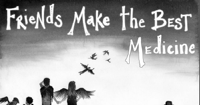Franz Kafka and the Question of Human Resources
Submitted by ThomasStone on Mon, 01/09/2012 - 12:27pm
The Director talked to me today. About not having sufficient people to run the Institute, and the other shortages caused by the war. And he asked my advice. And I gave him good ideas - pointed the way. I do know my strengths - although far more familiar with my weaknesses. And as the Director talked to me, he looked at me. In the eyes - as he so often does.
But he did not see me. Not the I which I carry around inside myself. Not the K. He saw an adequately dressed government official, Herr Doktor of Law, a Jew (I think he really does not mind), who knows well the operations of the Worker's Accident Insurance Institute for the Kingdom of Bohemia in Prague. Has, indeed, risen to the rank of Deputy-Secretary.
Franz Kafka, “The Castle”
In The Castle, a protagonist known only as K. struggles against the bureaucracy of mysterious authorities who govern the surrounding village. At times surreal, this dark Kafka novel involves the frustrations we face when we dare to stand against the system. While this novel stands among Kakfa’s most celebrated works, few people realize the contributions Kafka made at his other job.
Because of The Castle, Kafka is often associated with the horror of bureaucracy and paperwork. However, few people are aware of his day job at the Workman’s Accident Insurance Institute for the Kingdom of Bohemia. There he would draw pictures of grimly mangled fingers, a product of the industrial conditions, defective apparatuses and malfunctioning machines inherent to the lumber industry in the Kingdom of Bohemia at the time. In fact, for many, Kafka’s greatest success had nothing to do with writing.
From Salmagundi Magazine:
Kafka's most famous achievement in his lifetime was not writing Das Schloss or Ein Prozess. It was receiving the gold medal of the American Safety Society in 1910, 1911, or 1912. Kafka won the medal because of his outstanding contributions to workplace safety, and in particular the invention of the modern safety helmet, commonly called a hard hat. Because of his innovation, fewer than 25 people per 1,000 steel workers had been killed in industrial accidents, which was unprecedented.
The irony of Kafka’s position as a safety bureaucrat is only underlined by the fact that he excelled at his job; he was frequently promoted, much loved by his co-workers, had very long vacations and several sabbaticals, and worked very light hours compared to the average American work week of today.
Would that we could see Kafka working the same job today.
Knowledge work a century ago would have been saddled with an incredible amount of paperwork that would be significantly decreased by today’s greater computerized efficiency. Payroll software and email greatly decrease the amount of tree waste (ironically, this would have been bad for the lumber business for which Kafka had worked), but workplace accidents remain just as grim today if not more so. In fact, increased complications in the realm of workers compensation and insurance may cause enough stress and anxiety to produce the same neurotic, hypochondriac writer that was borne in those wood-processing factories so many years ago.
So might there be another Kafka among us today amidst the modern pressure cooker of sales, profits and productivity?


















